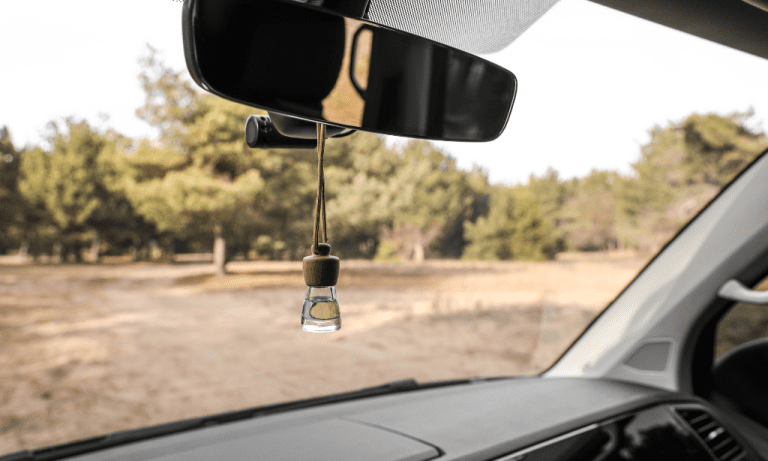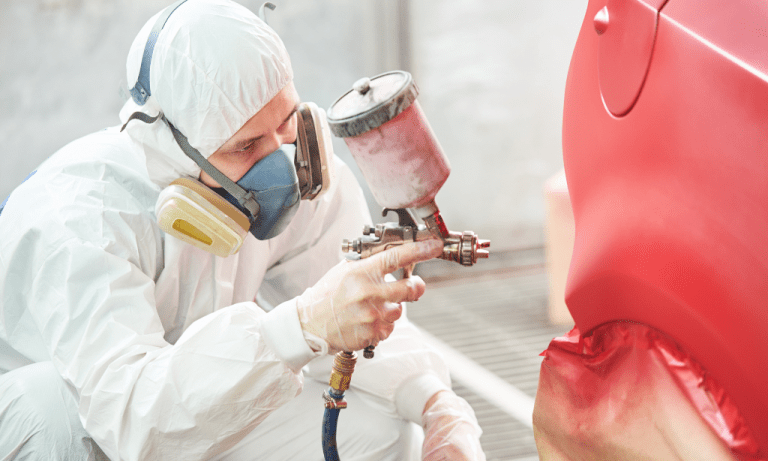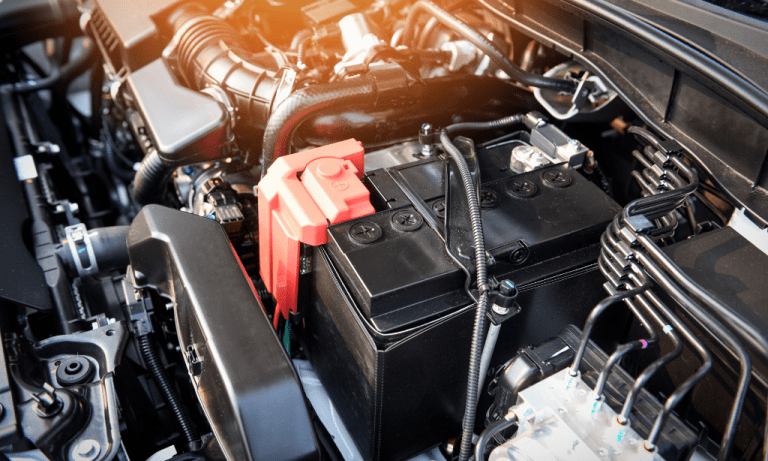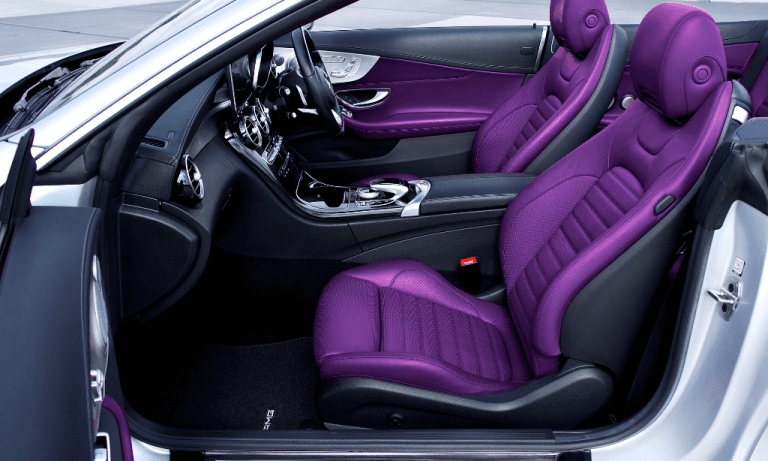Lowering Leaf Springs Vs. Flip Kit: The Ultimate Showdown for Slamming Your Ride
Lowering leaf springs and flip kits are two options for lowering the ride height of a vehicle.
Understanding Lowering Leaf Springs
Lowering leaf springs can be a great way to give your vehicle a sleek and stylish look. But what exactly are lowering leaf springs and how do they work? In this section, we will dive into the details of lowering leaf springs, discuss their benefits, and explore the factors to consider when choosing the right ones for your vehicle.
What Are Lowering Leaf Springs?
- Lowering leaf springs are specially designed springs that are used to lower the ride height of a vehicle.
- They are an alternative to coil springs and are commonly used in trucks and suvs.
- These springs are usually made of steel and are built to withstand heavy loads.
How Do Lowering Leaf Springs Work?
- Lowering leaf springs work by supporting the weight of the vehicle and providing a smooth and comfortable ride.
- They are designed to flex and absorb the shocks and bumps encountered on the road.
- By replacing the stock leaf springs with lowering ones, the overall ride height of the vehicle can be reduced, giving it a lowered appearance.
Benefits Of Using Lowering Leaf Springs:
- Improved aesthetics: Lowering leaf springs offer a sleek and stylish look, making your vehicle stand out from the crowd.
- Enhanced handling: Lowering the vehicle’s center of gravity improves handling and reduces body roll, providing a more stable driving experience.
- Increased towing capacity: Lowering leaf springs can increase the towing capacity of your vehicle, allowing you to haul heavier loads.
Factors To Consider When Choosing Lowering Leaf Springs:
- Vehicle type and weight: Different vehicles require different types of lowering leaf springs based on their weight and suspension design.
- Desired drop: Determine the amount of drop you want for your vehicle, as lowering leaf springs come in varying drop heights.
- Compatibility: Ensure the lowering leaf springs you choose are compatible with your vehicle’s make, model, and year.
- Budget: Consider your budget, as lowering leaf springs can vary in price depending on the brand and quality.
Lowering leaf springs can be a great option for those looking to add style and improve the performance of their vehicles. With their ability to lower the ride height and enhance handling, these springs offer a winning combination of both aesthetics and functionality.
By considering factors such as vehicle type, desired drop, compatibility, and budget, you can make an informed decision when choosing the right lowering leaf springs for your vehicle. So, go ahead and give your ride the lowered look it deserves!
Exploring Flip Kit Lowering Solutions
Lowering leaf springs and flip kits are two popular solutions for achieving a sleek, lowered look for your vehicle. In this section, we will explore the benefits of using a flip kit for lowering your ride. From understanding what a flip kit is to its advantages and important considerations, we’ll cover it all.
What Is A Flip Kit?
A flip kit is a suspension modification that allows for the lowering of the rear end of a vehicle. It involves relocating the rear axle on top of the leaf springs instead of beneath them, effectively flipping the springs. This alteration alters the height and stance of the vehicle, giving it a lower and more aggressive appearance.
How Does A Flip Kit Work?
When a flip kit is installed, the rear axle is repositioned on top of the leaf springs. This lowers the suspension, resulting in a decrease in ride height. Additionally, some flip kits may come with extended shackles, which further contribute to the lowering effect.
By flipping the springs and making these adjustments, a flip kit provides a cost-effective and straightforward way to achieve the desired lowered look.
Advantages Of Using A Flip Kit For Lowering
Using a flip kit for lowering your vehicle offers a range of advantages, including:
- Affordable: Flip kits are generally more affordable compared to alternatives like lowering springs or air suspension systems.
- Easy installation: With basic mechanical knowledge and the right tools, a flip kit can be relatively easy to install, making it accessible for diy enthusiasts.
- Retains payload capacity: Unlike lowering springs, which may sacrifice payload capacity, flip kits allow you to maintain the original hauling capabilities of your vehicle.
- Improved handling: Lowering the rear suspension can enhance the vehicle’s stability and handling, providing better control and reducing body roll.
Important Considerations When Selecting A Flip Kit
Before selecting a flip kit for your vehicle, it’s crucial to keep the following factors in mind:
- Compatibility: Ensure that the flip kit you choose is specifically designed for your make and model of vehicle to ensure proper fitment.
- Drop height: Different flip kits offer varying degrees of drop height, so consider your desired level of lowering before making a selection.
- Quality: Look for flip kits made from high-quality materials to ensure durability and longevity.
- Suspension travel: Take into account the impact of the lowered suspension on your vehicle’s suspension travel and how it may affect the overall ride quality.
By considering these factors and understanding the benefits that come with using a flip kit, you can confidently select the right solution for achieving the lowered look you desire for your vehicle. Remember, proper research and installation are key to ensuring a successful lowering modification.
So, get ready to turn heads with an eye-catching, lowered stance!
Comparing Lowering Leaf Springs And Flip Kits
There are several options available for lowering your vehicle’s suspension, but two popular choices are lowering leaf springs and flip kits. Each option comes with its own set of pros and cons, and it’s important to understand these before making a decision.
In this blog post, we will compare the pros and cons of using lowering leaf springs and flip kits, as well as discuss factors to consider when deciding between the two. Additionally, we will provide real-world examples of vehicles and scenarios where one may be preferable over the other.
Pros And Cons Of Using Lowering Leaf Springs:
- Pros:
- Easy installation: Lowering leaf springs can be relatively straightforward to install, making it a popular choice for diy enthusiasts.
- Cost-effective: Compared to other suspension modification options, lowering leaf springs are generally more affordable, making it an attractive option for those on a budget.
- Retain stock ride quality: Lowering leaf springs can help achieve a lowered stance without compromising the overall ride quality of the vehicle.
- Cons:
- Limited adjustability: Lowering leaf springs provide limited adjustability options compared to other suspension modifications.
- Potential ride stiffness: Lowering leaf springs may result in a stiffer ride due to the reduced suspension travel.
- Less versatility: Depending on the specific vehicle model, lowering leaf springs may not be suitable for achieving more extreme drop levels.
Pros And Cons Of Using A Flip Kit:
- Pros:
- Greater drop potential: Flip kits allow for a greater drop in the vehicle’s stance, making it a preferable option for those seeking a more aggressive look.
- Improved handling: By lowering the center of gravity, flip kits can enhance the vehicle’s handling characteristics and improve stability.
- Enhanced adjustability: Flip kits provide more adjustability options, allowing for fine-tuning the ride height to suit individual preferences.
- Cons:
- Higher installation complexity: Installing a flip kit requires more technical knowledge and expertise, making it less suitable for beginners or those without prior experience.
- Increased cost: Flip kits typically come at a higher price point compared to lowering leaf springs, which may not be feasible for those on a tight budget.
- Potential ride quality compromise: With a significant drop, the overall ride quality may become stiffer, and the vehicle may experience bottoming out on harsh bumps.
Factors To Consider When Deciding Between Lowering Leaf Springs And A Flip Kit:
- Desired drop level: Determine how low you want to lower your vehicle and which option can meet your specific requirements.
- Budget: Consider your budget and evaluate whether lowering leaf springs or a flip kit aligns with your financial capabilities.
- Installation expertise: Assess your technical knowledge and decide if you have the necessary skills to install a flip kit or if the simplicity of lowering leaf springs better suits your capabilities.
- Purpose of the vehicle: Take into account whether the vehicle primarily serves as a daily driver or if it will be used for performance or show purposes.
Real-world examples of vehicles and scenarios where one may be preferable over the other:
- If you own a truck primarily used for hauling heavy loads, lowering leaf springs may be a more suitable choice due to their ability to retain the stock ride quality and handle heavy loads effectively.
- For enthusiasts seeking an aggressive drop on their sports car or show car, a flip kit would provide the desired drop potential and enhanced handling characteristics.
- In situations where budget constraints are a concern, lowering leaf springs offer a cost-effective solution without compromising too much on performance.
- Those with limited technical expertise and tools may find the simplicity of lowering leaf springs more appealing, as flip kit installation requires a higher level of expertise.
Ultimately, choosing between lowering leaf springs and flip kits depends on a combination of personal preference, budget, technical skills, and desired drop level. Consider all these factors before making a decision to ensure you achieve the desired look and performance for your vehicle.
Installation And Maintenance
Lowering Leaf Springs Vs. Flip Kit: Installation And Maintenance
Installation Process For Lowering Leaf Springs
- Lowering leaf springs are installed by removing the existing leaf springs and replacing them with shorter ones.
- Here’s a step-by-step guide on how to install lowering leaf springs:
- Support the vehicle’s rear axle using jack stands.
- Remove the bolts that attach the leaf springs to the axle and the frame.
- Carefully remove the old leaf springs from the vehicle.
- Install the new lowering leaf springs in the same position as the old ones.
- Secure the leaf springs with the bolts and tighten them to the recommended torque.
- Lower the vehicle and remove the jack stands.
- Repeat the same process for the other side of the vehicle.
Installation Process For A Flip Kit
- A flip kit is installed by flipping the rear axle on top of the leaf springs, effectively lowering the vehicle’s ride height.
- Here’s a step-by-step guide on how to install a flip kit:
- Support the vehicle’s rear axle using jack stands.
- Remove the u-bolts, shock absorbers, and any other components that are attached to the leaf springs.
- Carefully remove the leaf springs from the vehicle.
- Flip the rear axle on top of the leaf springs.
- Reinstall the leaf springs, making sure they are properly aligned with the rear axle.
- Attach the u-bolts, shock absorbers, and other components back onto the leaf springs.
- Tighten all the bolts to the recommended torque.
- Lower the vehicle and remove the jack stands.
- Repeat the same process for the other side of the vehicle.
Tips And Precautions For Installing Each Option
- Lowering leaf springs:
- Measure the distance between the wheel well and the top of the tire before and after installation to ensure proper lowering.
- It is recommended to have a professional mechanic perform the installation if you are not familiar with working on suspension systems.
- Make sure to use the correct tools and follow the manufacturer’s instructions for installation.
- Flip kit:
- It is crucial to properly align the rear axle with the leaf springs to avoid any issues with the vehicle’s handling and stability.
- Ensure that all components, such as u-bolts and shock absorbers, are tightly secured to prevent any potential hazards.
- If you are not experienced in working on suspension systems, it is advisable to consult a professional for installation.
Maintenance And Care For Both Lowering Leaf Springs And Flip Kits
- Lowering leaf springs:
- Regularly inspect the leaf springs for any signs of damage or wear, such as cracks or sagging.
- Keep the leaf springs clean and free from any debris or corrosive substances that could accelerate deterioration.
- Follow the manufacturer’s recommendations for lubrication to maintain smooth operation of the leaf springs.
- Flip kit:
- Regularly check the flip kit components, including u-bolts and bolts, for any signs of loosening or damage.
- Keep the flip kit clean and free from dirt and debris that can lead to corrosion.
- It is essential to periodically inspect the rear axle alignment to ensure proper handling and prevent premature wear on the flip kit components.
Remember, proper installation and regular maintenance are crucial for optimizing the performance and longevity of both lowering leaf springs and flip kits.
Achieving The Desired Ride Height
Are you looking to achieve the perfect ride height for your vehicle? Lowering leaf springs and flip kits are two popular options that can help you achieve the desired height. Each option offers different benefits and considerations, so it’s important to understand the adjustable features and factors to consider when determining the ideal ride height.
Adjustability Options For Both Lowering Leaf Springs And Flip Kits:
- Lowering leaf springs: These springs are designed to replace the factory springs and can provide a significant drop in ride height. Some of the adjustable features include:
- Different spring rates: The springs are available in various rates to accommodate different vehicle weights and preferences.
- Adjustable shackles: These allow for fine-tuning the height by changing the distance between the frame and rear leaf springs.
- Flip kits: A flip kit involves relocating the axle from below the leaf springs to on top of them. This modification can effectively lower the vehicle’s ride height. Key adjustability options include:
- Adjustable shackles: Similar to lowering leaf springs, flip kits also provide the ability to fine-tune the ride height by adjusting the shackles.
Finding The Ideal Ride Height For Your Vehicle:
When determining the desired ride height for your vehicle, several factors should be taken into account. These considerations will help you find the perfect balance between aesthetics and performance:
- Vehicle purpose: Consider whether your vehicle will be primarily used for daily driving, racing, or off-roading. The ride height can greatly impact the vehicle’s performance and handling characteristics in each scenario.
- Ground clearance: Evaluate the terrain you will most frequently encounter to ensure that the desired ride height maintains adequate ground clearance. This is especially important for off-road enthusiasts.
- Suspension geometry: Lowering a vehicle’s ride height can affect the suspension’s geometry, resulting in changes to alignment, camber, and toe. It’s important to consider these factors to ensure optimal tire wear and handling.
Fine-Tuning The Ride Height For Enhanced Performance And Aesthetics:
Once you’ve achieved the desired ride height, fine-tuning the suspension can further enhance performance and aesthetics. Consider the following:
- Camber adjustment: Lowering a vehicle’s ride height can alter the camber angle, which refers to the tilt of the wheels. Depending on your preferences and the type of driving you do, you may want to adjust the camber to optimize tire contact and handling.
- Upgraded shocks and struts: When lowering the ride height, it’s often recommended to upgrade the shocks and struts to match the new suspension setup. This will ensure proper damping and improved ride quality.
- Wheel and tire sizing: Lowering the ride height can create the opportunity to upgrade to larger wheels and tires. Carefully consider the appropriate sizing to maintain proper clearance and avoid any negative effects on performance and handling.
By understanding the adjustability options, considering the factors for determining the desired ride height, and fine-tuning the suspension, you can achieve the ideal setup that enhances both the performance and aesthetics of your vehicle. Whether you choose lowering leaf springs or a flip kit, careful consideration and customization will result in a ride height that meets your preferences and needs.
Ensuring Safety And Ride Quality
Lowering leaf springs vs. flip kit: ensuring safety and ride quality
Lowering leaf springs and flip kits are popular modifications for vehicle enthusiasts who want to give their rides a more aggressive stance and improved handling. However, it’s essential to consider the impact of these modifications on safety and ride quality.
In this section, we will explore the effects of lowering leaf springs and flip kits and discuss best practices to maintain safety and ride comfort when using either option.
Impact Of Lowering Leaf Springs On Safety And Ride Quality
- Lowering leaf springs can enhance the appearance of a vehicle, providing a sleek and sporty look.
- The lower ride height can improve aerodynamics, leading to better fuel efficiency.
- However, lowering leaf springs can also affect the vehicle’s suspension geometry, potentially compromising safety and ride comfort.
- The reduced suspension travel may result in a stiffer ride, transmitting more road imperfections to the cabin.
- Cornering and handling can be improved, but excessive lowering may lead to traction issues, especially on uneven or rough surfaces.
Impact Of A Flip Kit On Safety And Ride Quality
- A flip kit is an alternative method to lower the rear of a vehicle, commonly used on trucks.
- By relocating the axle above the leaf springs, the flip kit achieves a more aggressive look without changing the suspension geometry.
- This modification maintains the stock ride quality, ensuring a smoother and more comfortable driving experience.
- Handling and cornering may not be significantly impacted, as the flip kit primarily affects the rear suspension.
Best Practices To Maintain Safety And Ride Comfort When Using Either Option
- Consult with a professional suspension specialist who can recommend the most suitable lowering method for your vehicle, considering your desired ride height and usage.
- Ensure that all components, including the leaf springs or flip kit parts, are of high quality and properly installed.
- Regularly inspect and maintain suspension components to detect any signs of wear or damage.
- Adjust other aspects of the vehicle setup, such as shock absorbers and alignment, to compensate for the changes induced by lowering or flipping the suspension.
- Test the vehicle’s handling and performance after the modifications to ensure the desired outcome is achieved while maintaining ride comfort and safety.
Potential Issues And How To Address Them For Optimal Performance
- Wheel alignment may be affected by lowering or flipping the suspension, leading to uneven tire wear or pulling to one side. Regular alignment checks and adjustments can address these issues.
- In some cases, the lowered ride height may cause ground clearance problems, particularly when encountering speed bumps, driveways, or uneven terrain. Careful driving and awareness of the vehicle’s limitations can help mitigate these risks.
- If the chosen lowering method significantly reduces suspension travel, it may result in a harsh and uncomfortable ride. Upgraded or performance-oriented shock absorbers can help alleviate these concerns.
Remember, ensuring safety and ride quality should be the top priorities when modifying your vehicle’s suspension. By following best practices and addressing potential issues, you can enjoy the benefits of lowered leaf springs or flip kits while maintaining optimal performance on the road.
Cost And Cost-Effectiveness
Lowering Leaf Springs Vs. Flip Kit: Cost And Cost-Effectiveness
Lowering a vehicle can greatly enhance its aesthetics and overall performance. When it comes to lowering your car or truck’s suspension, two popular options to consider are lowering leaf springs and a flip kit. Both options have their own set of benefits and considerations, including cost and cost-effectiveness.
In this section, we will explore the average cost of each option, the factors that can influence the cost, and how to evaluate the long-term cost-effectiveness of both lowering leaf springs and flip kits.
Average Cost Of Lowering Leaf Springs:
- Lowering leaf springs generally range in price from $150 to $500 per set.
- The cost can vary depending on the make and model of your vehicle, as well as the desired drop height.
- Additional expenses may include installation fees if you choose to have a professional install the leaf springs.
Average Cost Of A Flip Kit:
- Flip kits typically range in price from $200 to $600, depending on the brand and quality.
- As with lowering leaf springs, the cost can be influenced by the specific vehicle and desired drop height.
- If you opt for professional installation, be prepared to factor in additional labor costs.
Factors Influencing The Cost Of Each Option:
Lowering leaf springs:
- The type and quality of the lowering leaf springs can significantly impact the cost. High-performance springs designed for specific vehicle models may come with a higher price tag.
- Additional components, such as shackles or hangers, might be necessary to achieve the desired drop, which can add to the overall cost.
- Installation costs can vary depending on the complexity of the installation process and the expertise of the installer.
Flip kit:
- Similar to lowering leaf springs, the brand and quality of the flip kit can affect the price. Consider opting for reliable brands known for their durability and performance.
- Installation costs may also vary, depending on the complexity and time required for the installation.
Evaluating The Long-Term Cost-Effectiveness:
- Lowering leaf springs and flip kits both offer long-term cost savings in terms of improved fuel efficiency by reducing wind resistance and optimizing the vehicle’s suspension system.
- However, it’s essential to consider additional factors, such as any potential impact on the vehicle’s warranty and insurance coverage.
- Careful consideration should also be given to the long-term maintenance and potential need for repairs related to the modifications.
The average cost of lowering leaf springs and flip kits can vary depending on several factors. When deciding between these two options, it’s essential to consider your budget, vehicle specifications, and desired drop height. Additionally, evaluating the long-term cost-effectiveness requires looking beyond the initial investment and considering any potential impacts on warranty, insurance, and future maintenance needs.
By carefully considering these factors, you can make an informed decision that aligns with your budget and requirements.
Frequently Asked Questions For Lowering Leaf Springs Vs. Flip Kit
How Do Lowering Leaf Springs Affect Vehicle Performance?
Lowering leaf springs decrease the ride height, resulting in improved stability, handling, and aerodynamics for your vehicle.
What Is A Flip Kit And How Does It Work?
A flip kit consists of axle brackets that flip the axle and relocate the leaf springs underneath, achieving a lowered ride height.
Can I Install A Flip Kit Or Lower Leaf Springs Myself?
While it is possible to install a flip kit or lower leaf springs yourself, it is recommended to consult a professional for proper installation and alignment.
Conclusion
To sum it up, choosing between lowering leaf springs and a flip kit ultimately depends on your specific needs and preferences for your vehicle’s suspension. Lowering leaf springs may offer a cost-effective solution, providing a drop in ride height with improved handling and a sporty appearance.
On the other hand, a flip kit allows for a greater drop and maintains a smoother ride quality, making it ideal for those seeking a more aggressive stance. Both options have their advantages and disadvantages, so it’s essential to consider factors such as budget, desired drop amount, and desired ride quality before making a decision.
Whichever option you choose, it’s crucial to consult with a reputable mechanic or suspension specialist to ensure proper installation and compatibility with your vehicle’s make and model. By investing in the right suspension upgrade, you can transform your ride and enhance its overall performance.
Don’t forget to conduct thorough research and weigh the pros and cons to make an informed decision that aligns with your goals. Happy upgrading!
- Protecting Your Truck Bed: A Guide To Truck Bed Covers - July 14, 2025
- Finding The Right 88-98 Chevy Truck Bed Cover - July 14, 2025
- Finding The Right 88-98 Chevy Truck Bed Cover - July 14, 2025




